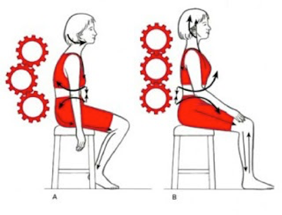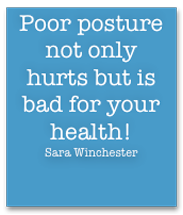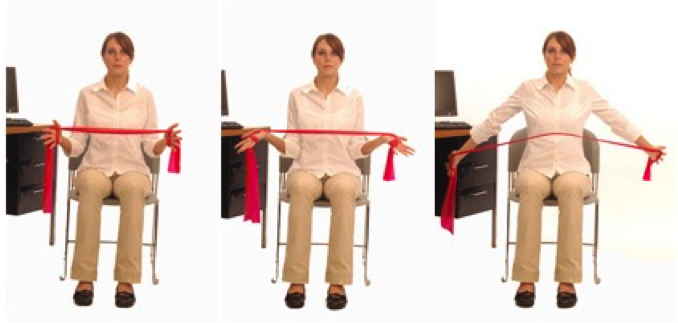
[/twocol_one] [twocol_one_last]

[/twocol_one_last] [su_spacer size=”10″] Do you sit at a desk or computer, or spend a lot of time standing in a fixed position? Well, you would know how hard it is to keep good posture, or in some instances even get good posture in the first place!
With the increased reliance on computer technology and more and more time sitting, is it any wonder so many people have postural issues? Many don’t even know they have postural issues! In fact, they can get symptoms like a shoulder problem, headaches or low back pain for no apparent reason and it’s often all down to their postural habits. Typical symptoms that come from poor posture in addition to the above are: neck tension or pain, foggy head and inability to concentrate, clenching teeth and jaw pain, tight chest muscles, pain throughout the mid back, sciatica and disc issues, sore muscles in mid to low back, tight hip flexors, poor breathing patterns, emotional stress and anxiety and tight hamstrings, just to name a few!
POOR POSTURE NOT ONLY HURTS, BUT IT’S BAD FOR YOUR HEALTH!
Your posture in any position is important, especially the longer you stay in it! The obvious posture that you’ve probably thought about at some stage, is your sitting posture at a desk. What about your posture when you ride a bike or go for a run? Or watch TV, eat your food or the posture you sleep in? These are all significant postural positions that if done without awareness, for a long period of time and done repetitively, can lead to complicated pain syndromes.
Bruggers exercise is a fabulous way to become aware of your posture and start to correct muscle imbalances that stem from, and lead to poor posture. I prescribe this exercise countless times per week in clinical practice and I would like to share with you how you do it, why you would choose to do it and what the purpose is.
This exercise can be done with or without a band (like in the image)
- Start sitting tall on your sit bones. Have your hands facing each other and your elbows flexed at 90 degrees with your elbows tucked in by your sides.
- Keeping your elbows by your side start to separate your hands and allow your palms to slowly face up to the sky.
- Complete the movement by squeezing the muscles between the shoulders and allow your hands to maximally separate with palms up. (the image shows elbows straight, you can complete the movement with your elbows bent).
- Repeat movement being aware of the muscles working in your back 10-20 times, 3-4 times per day.
- Allow your hands to come back in front of you whilst maintaining a gentle tightening in those same back muscles and keeping your shoulders in the same position.
This exercise is good for you if you do any of the following: sit or stand for prolonged periods, slump or slouch, get neck tension or tension headaches, rotator cuff problems in the shoulder or any of the previously mentioned situations. All of these symptoms need you to check in on your posture periodically throughout the day.
What I love about this exercise is that you can do it standing or sitting, with resistance or not to ‘switch on’ those muscles that often ‘switch off’ after being in a prolonged position. It’s an easy way of engaging these muscles as a group and it also makes people really aware of what good posture feels like. So, you can use it to check in with yourself anytime. Other helpful things in conjunction with Bruggers for improving your posture are consulting with a chiropractor, doing regular yoga and/or pilates.
If this exercise is uncomfortable or hurts in anyway, seek advice from your preferred practitioner.
Enjoy the health benefits of being aware and improving your posture.

